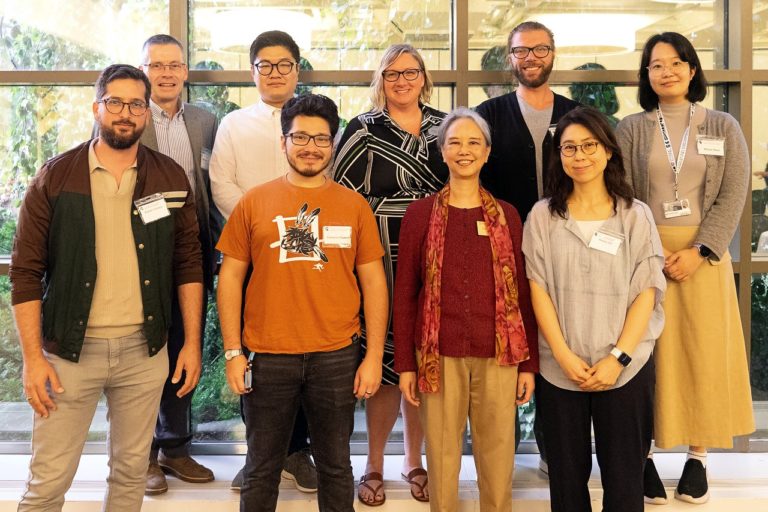Department of Art, Art History, and Design Professor Jon Frey and his team are using the latest tech tools to unlock clues from an ancient excavation site.
Creating a digital archive
Through the careful study of excavation records dating back some 40 years, Michigan State University’s Jon Frey has discovered an ancient gymnasium at the archaeological site of Isthmia, Greece.
Frey and his team are performing a “digital dig” of sorts. Rather than using shovels and tools to excavate the site, the researchers are studying a backlog of evidence housed in remote storage.
“The neat part is there are many moments when we discover things that the original excavators missed,” says Frey, assistant professor of classical studies in the Department of Art, Art History, and Design at the College of Arts and Letters. “So it’s kind of like our research has shifted from digging to detective work. We’re essentially re-excavating the archives.”
The neat part is there are many moments when we discover things that the original excavators missed, so it’s kind of like our research has shifted from digging to detective work. We’re essentially re-excavating the archives.
Working through old notes, photographs, field books and descriptions of artifacts, the MATRIX Center for Digital Humanities and Social Sciences at MSU and Frey’s team are digitizing the archives and posting the material online for all scholars to see. And using a three-year, $300,000 grant from the National Endowment for the Humanities, Frey has built a web service that provides people access to the records.
None of that is standard practice in the field of archaeology, he says.

Sharing stories of life in Ancient Greece
Located within the Sanctuary of Poseidon, which sits on the isthmus of Greece, the gymnasium probably stood180 meters by 70 meters, on par with the much more famous site of Olympia, home of the Olympic games, Frey says. Most likely, it featured gardens, walkways and places for observers to watch athletes exercise.

Frey thinks this space was connected to a Roman bathhouse, where people would’ve enjoyed a post-workout hot soak or massage.
“In general, Isthmia hasn’t been as popular a destination for visitors as the more famous sites of Athens, Corinth and Olympia,” says Frey. “But perhaps that’s due to a lack of familiarity with what the place meant to Greeks and Romans in classical antiquity. There’s a good story to be told here about ancient Greece and we’re trying to share that story with others.”

It’s a story that’s not been told often. Isthmia, which connected Athens and Corinth in the Ancient World, was an important place that served as the setting of choice for Greeks at several important moments in time, such as when hard decisions had to be made or big news needed to be announced to the masses. So, Frey says, Isthmia is an interesting source of evidence for how people negotiated large-scale social and political change.
At the same time, the discovery of the gymnasium shows how sports were as important to Greeks and Romans as they are to people today, he says. People came from all over Greece to compete and watch, which carried the allure of playing in a major ballpark or stadium today.
Painting a more accurate picture of the past
Frey started the Isthmia excavation project in 1993 as a student studying abroad at Ohio State University and has been back to the site every summer since 2004. In 2008, Frey began bringing his MSU students to Isthmia. OSU’s Timothy Gregory, who taught Frey, is the director of the dig and collaborator on this project.
While the field of archeology is becoming increasingly digital, sites such as Isthmia—where researchers began digging before the advent of technology— present a challenge, Frey says.
How do archaeologists connect a paper-based system with a digital system, without distracting from the wealth of evidence and knowledge that has already been recorded?

They could use a drone and GPS, like Frey did.
In October, he and his team went to Isthmia to capture drone footage of the site to create a 3-D model and map of Isthmia, both of which will be available this summer. Until now, there hasn’t been a complete map of Isthmia, only images and maps of different buildings. Frey’s been trying different ways to make sense of all the maps since 2009, but it’s only now that technology has caught up.
Putting the pieces together and creating a map helps paint a picture of the ancient athletic stomping ground—giving researchers a rare big-picture view of the important site and a better sense of how the entire sanctuary functioned, Frey says.
“We’re trying to find a way to use modern technology to improve upon, but not replace, these records from the past, trying to create a virtual archeology so that someone 20 or 50 years from now can get inside our heads and almost see the dig through our eyes,” he says. “This is hands down the most accurate representation of the site we’ve ever produced. And with only a few examples of gymnasiums ever excavated, it’s significant that with our work we might have a new example against which to compare the written evidence.”
We’re trying to find a way to use modern technology to improve upon, but not replace, these records from the past, to create a virtual archeology…
Learn more about Jon Frey online
Story originally published in MSUToday

